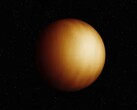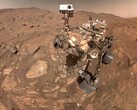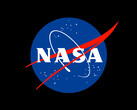If you have ever observed the night sky, you have already seen the Pleiades, a group of bright stars. But according to a recent study, this cluster could well be 20 times larger than we thought.
Located about 444 light years from Earth, the Pleiades cluster has been known for thousands of years, but only between five and eleven stars are visible to the naked eye. However, with the help of the TESS and Gaia satellites, scientists have discovered that many stars coming from this structure were located in several places in the universe.
It is important to note that stars are born in these clusters and separate after million of years. And it is by measuring the rotation speed of known stars, which allows us to know their age, because younger stars rotate faster than older ones, that they have reached this conclusion. And Andrew Boyle, a researcher at the University of North Carolina at Chapel Hill, states the following:
"This study changes how we see the Pleiades, not just seven bright stars, but thousands of long-lost siblings scattered across the whole sky.”
But that's not all, because while many stars belonging to this cluster are spread in space, scientists are now turning their attention to the Sun. Indeed, many questions remain about its origin. And thanks to this method, it might be possible to find the cluster that created our star.























